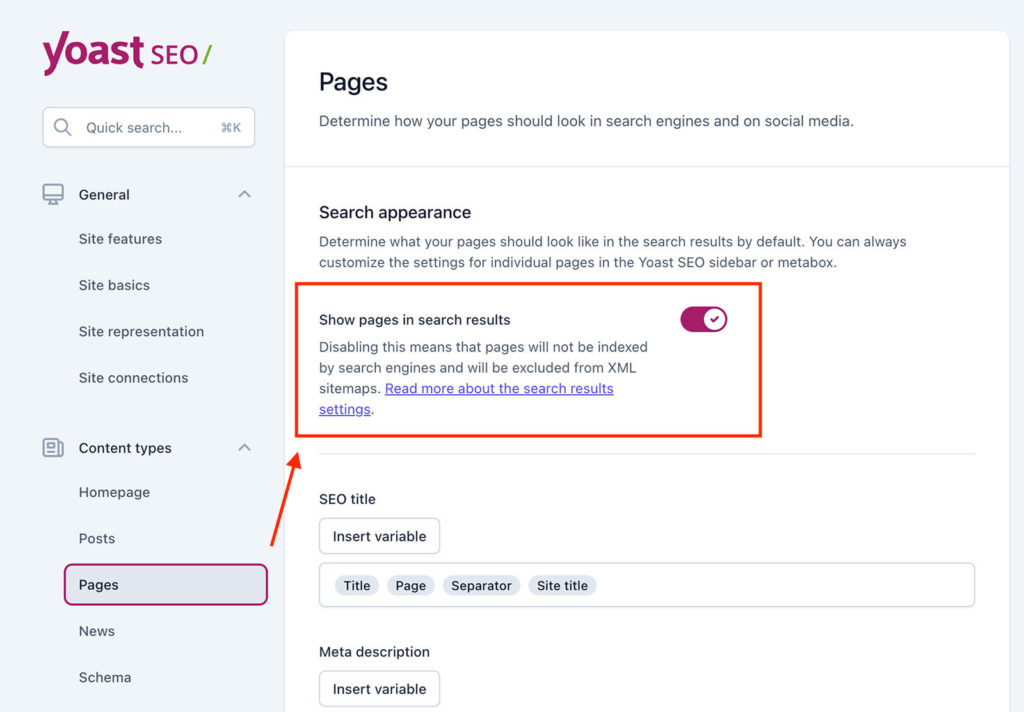
如果您还不熟悉这个术语,那么在错综复杂的网站开发和搜索引擎优化(SEO)领域,了解 robots 元标签中的 "noindex "指令对网站管理员来说至关重要。robots 元标签嵌入网页的 HTML 源代码中,为搜索引擎爬虫提供如何与内容交互和索引内容的指令。当网站管理员需要解决与索引相关的问题或控制特定网页的可见性时,"noindex "指令就成了他们的重要工具。
noindex "指令是网站管理员阻止搜索引擎爬虫(如 Googlebot)索引其网站上某些页面或内容的强大机制。通过战略性地部署 "noindex "指令,网站管理员可以有效地将网页从搜索引擎结果页面(SERP)中隐藏起来,确保敏感或不相关的内容不会出现在用户的在线搜索中。该指令还与 "nofollow "等其他指令相辅相成,后者指示搜索引擎机器人不要跟踪页面上的链接,从而改变页面排名的流向,增强网站的整体搜索引擎优化策略。
在数字营销和 网站管理因此,掌握 robots 元标签及其对应的 "X-Robots-Tag "HTTP 标头的使用方法至关重要。X-Robots-Tag "标头提供了一种在 HTTP 层面设置指令的更高级方法,为网站管理员提供了对索引行为的细粒度控制。此外,Google 的 URL Inspection 等工具还能让网站管理员验证和分析搜索引擎爬虫是如何解释这些指令的,从而对网站的索引设置进行微调,以获得最佳性能。

对于博主和内容创建者来说,robots 元标签中的 "noindex "指令在管理单个帖子或页面的可见性方面发挥着至关重要的作用。通过有选择地应用 "noindex "指令,博主可以控制哪些内容出现在搜索结果中,从而塑造自己的在线形象,最大限度地发挥数字营销工作的影响。此外,了解如何将 "noindex "指令与 "disallow "或 "non-index "元标签等其他指令相结合,还能提高网站优化策略的有效性,确保网站管理员能够自信、准确地驾驭复杂的搜索引擎优化。
要从 WordPress 网站的 "robots "元标记中移除 "noindex "标记指令,可以按照以下步骤操作:
1.检查搜索引擎优化插件设置
如果您正在使用 Yoast SEO、All in One SEO 或 Rank Math 等搜索引擎优化插件,请检查插件设置,确保插件未添加 "noindex "指令。这些插件通常有控制单个页面或整个网站 robots.txt 文件元标签的选项。

例如,在 Yoast 搜索引擎优化:
- 进入 WordPress 仪表板、
- 点击'搜索引擎优化侧边栏中的''、
- 然后选择搜索外观。'
- 在内容类型'选项卡、
- 找到内容类型(如帖子或页面),使用"......无索引指令
- 并设置在搜索结果中显示 [内容类型]?"选项改为"......是.'
- 如果要更改单个页面或文章的设置,请编辑页面或文章,向下滚动到 Yoast SEO 元方框、
- 点击高级'选项卡、
- 并设置允许 搜索引擎 在搜索结果中显示此 [内容类型]?"选项改为"......是.'
2.检查主题的 header.php 文件
某些 WordPress 主题可能会在默认情况下在 "robots "元标签中添加 "noindex "指令。要检查并删除它,请

- 进入 WordPress 仪表板,导航至 "WordPress"。外观' > '主题编辑器。'
- 在主题文件'部分,找到并点击'......'。页眉.php'进行编辑。
- 找到机器人'元标记与'......无索引指令。它看起来像这样
- <meta name=”robots” content=”noindex, follow” />
- 删除无索引'部分的内容属性,所以看起来像这样:
- <meta name=”robots” content=”follow” />
- 点击更新文件按钮。
3.检查 WP 中的阅读设置
确保'搜索引擎可见度WordPress 阅读设置中的"...... "选项未启用,因为这会添加一个"...无索引'指令到您的整个网站。

- 进入 WordPress 仪表板,导航至 "WordPress"。设置' > '阅读。'
- 向下滚动到搜索引擎可见度'部分,并确保'...阻止搜索引擎 从索引本网站'未被选中。
- 点击保存更改按钮。
进行这些更改后,应从 "robots "元标签中删除 "noindex "指令。请记住,搜索引擎可能需要一段时间才能 抓取您的网站 并更新其索引。您还可以使用 谷歌搜索控制台 以加快进程。
总结
从 WordPress 的 "robots "元标签中移除 "noindex "指令,可以通过检查和调整搜索引擎优化插件的设置、检查主题的 header.php 文件以及确保禁用阅读设置中的 "搜索引擎可见性 "选项来实现。通过这些步骤,您可以确保搜索引擎正确索引您的 WordPress 网站,使其出现在搜索结果中。请记住,更改可能需要一些时间才能反映到搜索引擎索引中,因此请耐心等待,并考虑通过以下方式请求重新抓取 谷歌搜索控制台 如果您仍不确定是否要删除 meta robots 中的 noindex 元标签,请找一位提供搜索引擎优化相关服务的网站管理员,帮助您轻松管理网站。
常见问题
如何删除 Wordpress 中的 noindex 标签?
发表于:2023-03-31
更新日期: 2024-07-15